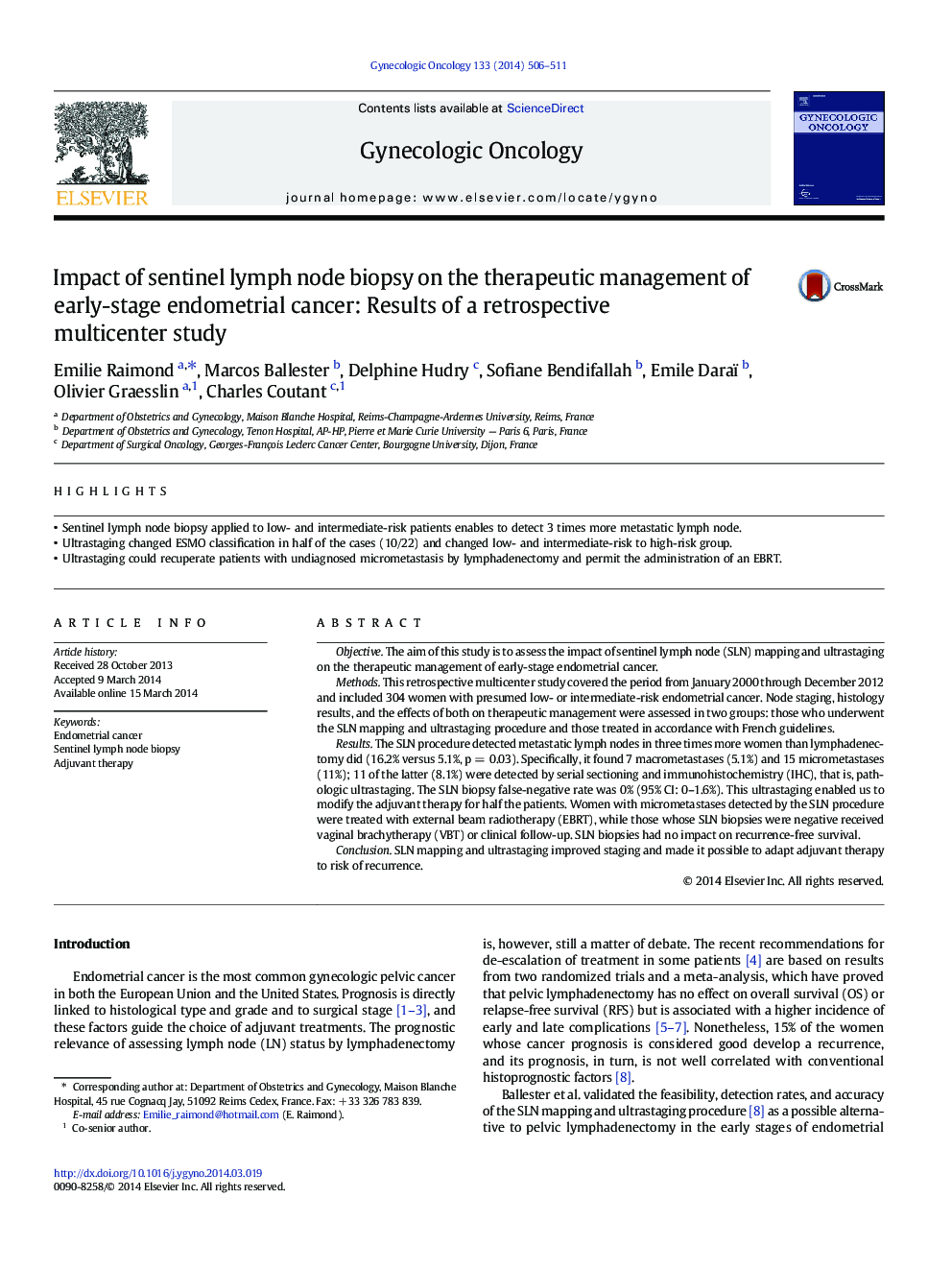| Article ID | Journal | Published Year | Pages | File Type |
|---|---|---|---|---|
| 3944610 | Gynecologic Oncology | 2014 | 6 Pages |
•Sentinel lymph node biopsy applied to low- and intermediate-risk patients enables to detect 3 times more metastatic lymph node.•Ultrastaging changed ESMO classification in half of the cases (10/22) and changed low- and intermediate-risk to high-risk group.•Ultrastaging could recuperate patients with undiagnosed micrometastasis by lymphadenectomy and permit the administration of an EBRT.
ObjectiveThe aim of this study is to assess the impact of sentinel lymph node (SLN) mapping and ultrastaging on the therapeutic management of early-stage endometrial cancer.MethodsThis retrospective multicenter study covered the period from January 2000 through December 2012 and included 304 women with presumed low- or intermediate-risk endometrial cancer. Node staging, histology results, and the effects of both on therapeutic management were assessed in two groups: those who underwent the SLN mapping and ultrastaging procedure and those treated in accordance with French guidelines.ResultsThe SLN procedure detected metastatic lymph nodes in three times more women than lymphadenectomy did (16.2% versus 5.1%, p = 0.03). Specifically, it found 7 macrometastases (5.1%) and 15 micrometastases (11%); 11 of the latter (8.1%) were detected by serial sectioning and immunohistochemistry (IHC), that is, pathologic ultrastaging. The SLN biopsy false-negative rate was 0% (95% CI: 0–1.6%). This ultrastaging enabled us to modify the adjuvant therapy for half the patients. Women with micrometastases detected by the SLN procedure were treated with external beam radiotherapy (EBRT), while those whose SLN biopsies were negative received vaginal brachytherapy (VBT) or clinical follow-up. SLN biopsies had no impact on recurrence-free survival.ConclusionSLN mapping and ultrastaging improved staging and made it possible to adapt adjuvant therapy to risk of recurrence.
